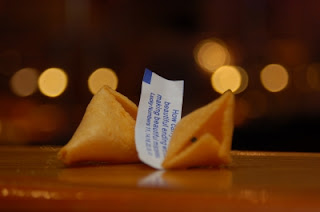I went inside Cebu La Fortuna Bakery the other day for some snacks. The bakeshop was exceptionally busy.
"Not the usual days," I noticed.
Cartons of goodies are lining up on the floor, while a saleslady was trying to do her inventory. At the counter, there was a long line, all seem to carry a red box. I got near and looked at what's the "fuss buy" about. Ah, it was Chinese "tikoy", also known as Nian Gao or Chinese New Year cake made from glutinous rice.
"Not the usual days," I noticed.
Cartons of goodies are lining up on the floor, while a saleslady was trying to do her inventory. At the counter, there was a long line, all seem to carry a red box. I got near and looked at what's the "fuss buy" about. Ah, it was Chinese "tikoy", also known as Nian Gao or Chinese New Year cake made from glutinous rice.
"Now, I get it," I said to myself.
It's almost Chinese New Year, and those who will celebrate the event are hurrying up for that special cake, Tikoy or Nian Gao, which means higher year.
I also liked to grab a box of it but, I'm not a fan nor fond of tikoy. Maybe, because I'm not Chinese(?). So, I went around, and found what I fancied: Fortune Cookies(!).
"This is perfect!", I told myself. My kids love to break those cookies and read the slips of paper inside.
At home, I researched about fortune cookies and other Chinese food, planning to write something about them.
And, just when I thought that these cookies are among the food specials prepared during Chinese New Year, I was definitely wrong. As I further my research, I found out that there is nothing Chinese about it at all.
And, just when I thought that these cookies are among the food specials prepared during Chinese New Year, I was definitely wrong. As I further my research, I found out that there is nothing Chinese about it at all.
A delightful combination of flour, eggs, sugar, vanilla, and oil, the Fortune Cookie as it is called is a crisp goodie with a piece of paper hidden inside. On the paper, words of wisdom, vague predictions, or lucky numbers are written that seemingly pertain to the person who opened and ate the cookie. This paper is actually the "fortune" in the Fortune Cookie that the holder either gets rid or take heed.
In other countries, the United States, in particular, Chinese restaurants often serve Fortune Cookies as desserts to their customers. But, don't you know that this cookie is not from China? So, where did it come from?
Although unclear, common historical accounts point the origin of this infamous cookie from Japan, as the first recipe used was a remake of a Japanese cracker.
In Kyoto, Japan, there is a cookie that looks the same as the present-day Fortune Cookie, although bigger, a bit darker, and uses sesame and miso. That cookie is called Tsujiura Senbei. From its edge, protrudes a slip of paper containing written wishes or fortune, just like our modern Fortune Cookie.
In summary, I may say that Fortune Cookies are born in Japan, adopted by China, and loved by the Americans.
Although unclear, common historical accounts point the origin of this infamous cookie from Japan, as the first recipe used was a remake of a Japanese cracker.
In Kyoto, Japan, there is a cookie that looks the same as the present-day Fortune Cookie, although bigger, a bit darker, and uses sesame and miso. That cookie is called Tsujiura Senbei. From its edge, protrudes a slip of paper containing written wishes or fortune, just like our modern Fortune Cookie.
In summary, I may say that Fortune Cookies are born in Japan, adopted by China, and loved by the Americans.
--- Ireen ---

Very informative :)
ReplyDeleteI have added your link in my page I :)